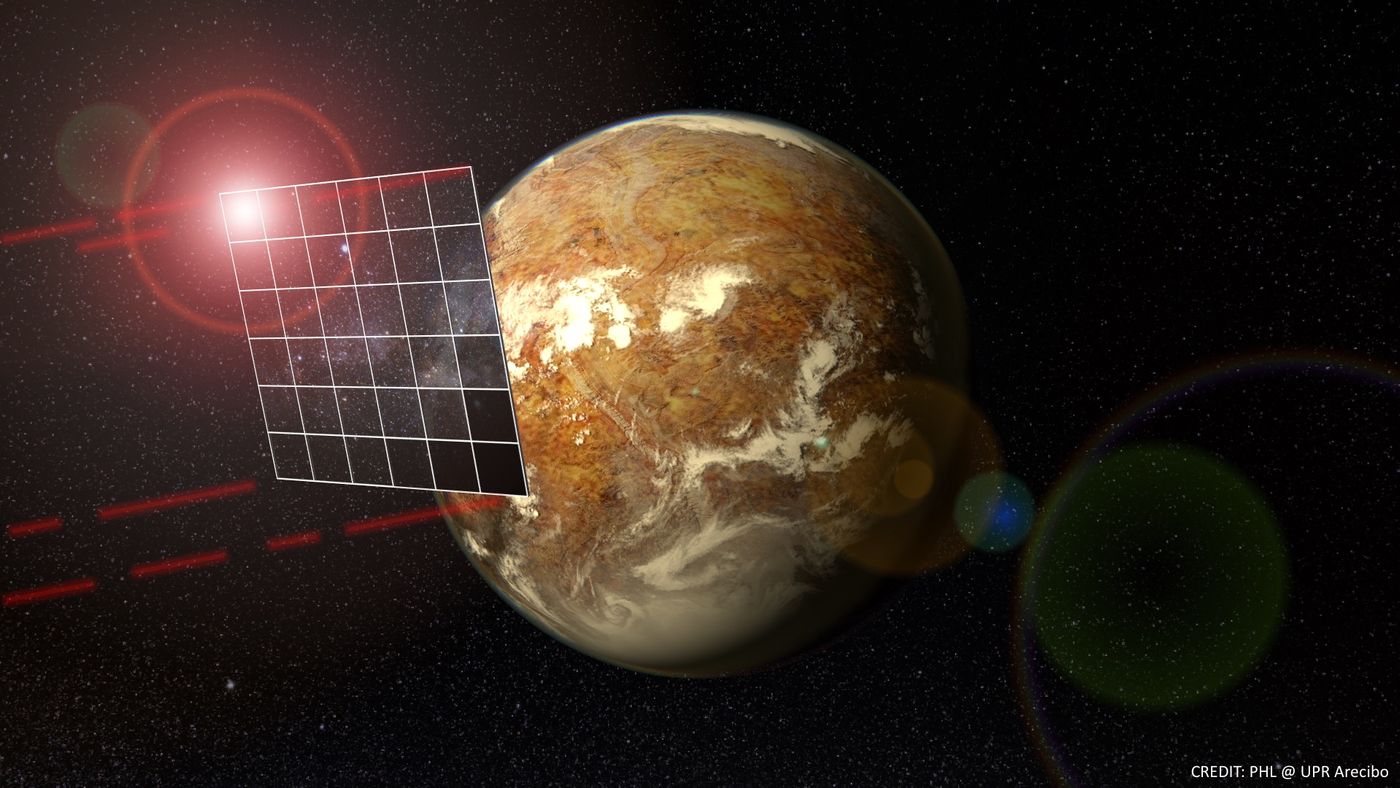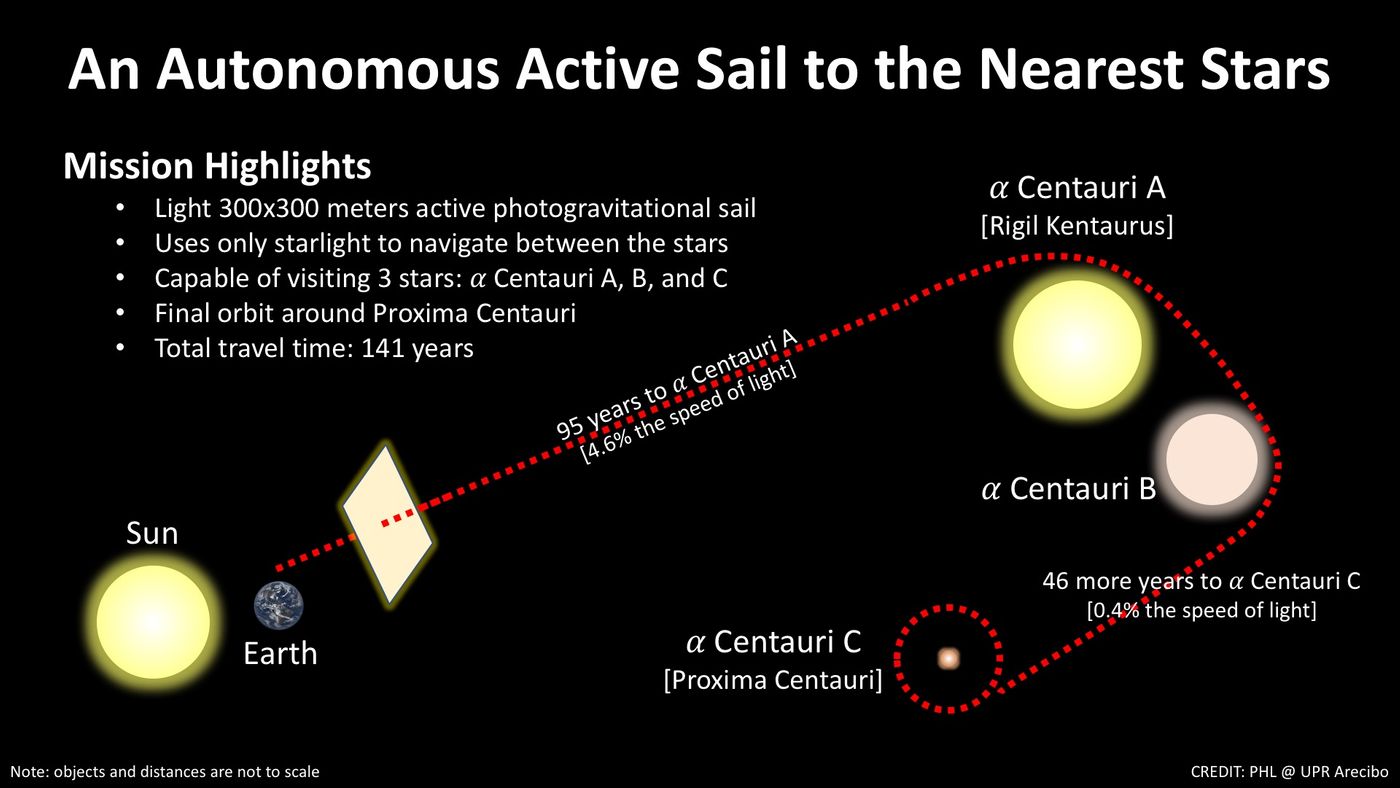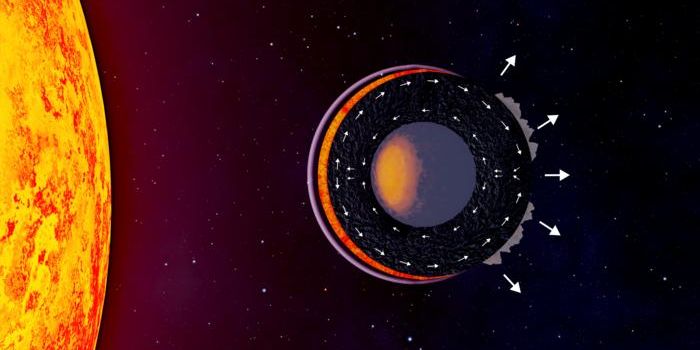Can Probes Be Sent to the Centauri System(s) With a Solar Sail and Slowed Down Enough to Orbit Something?
There is a lot of interest in exploring two of our closest stellar neighbors, which happen to be Alpha and Proxima Centauri. The two star systems are just over four light years away, and astrophysicists are working their buns off to come up with a plan to get some kind of probe to these systems within a reasonable amount of time.
Because getting a manmade object from Earth to another body 4 light years away is no laughing matter, an entirely new kind of propulsion system would be required. Current space propulsion technologies are slow, and have limited fuel reserves or power sources.
So how can we improve our speed at which we send probes into space? The answer seems to lie in solar sails, which are special sails that utilize the propulsion of positively-charged particles. These sails are very wide and thin, but their reflective materials help to create a resistance against moving positively-charged particles in space, hence propulsion in a particular direction. These particles originate from sources such as the Sun, or can be created from an array of powerful lasers on Earth.
Image Credit: University of Puerto Rico at Areceibo
If the rather complex idea behind solar sails, something that sounds counter-intuitive from the start, still had you scratching your head, then perhaps this explanation will help to clear things up:
The idea behind Breakthrough Starshot was just one example of such solar sail technology that could one day be realized, but a study published in The Astrophysical Journal Letters by lead author René Heller from the Max Planck Institute for Solar System Research appears to take into consideration the methodology around actually slowing the probe down and inserting it into orbit around one of the exoplanets in one of the neighboring systems, which is something Breakthrough Starshot really doesn't take into account.
Unfortunately, the flaw with Breakthrough Starshot is that by travelling at the high speeds the probe would need to achieve in order to get to the system in a reasonable amount of time (two decades or so), it would be nearly impossible to slow down the probe quickly enough to actually observe anything in the system once it got there. Instead, it would fly past everything too quickly.
The study focuses on moving away from Earth-based laser systems and harnessing the propulsion power of our own Sun. It would mean creating a much larger solar sail and moving up to five times slower, but the end result could be worth it, as it focuses more on slowing down the probe once it gets to the system. Although the travel might take longer than the lifespan of your average human, the end result is that we could successfully slow the probe enough that it could get within an orbit around one of the bodies in one of the neighboring Centauri systems.
So, what are the major differences in time? – It turns out that the new plan could take around 100 years or so for the probe to actually get to its destination, which is about five times slower than Breakthrough Starshot. Afterwards, we’d have to wait another 50 years or so for the probe to tango with gravitational forces from certain bodies in these systems during a rare star alignment that happens once every 80 years so. This would let the probe could slow down enough to get into the orbit we want it to be in, and it'd work out to look something like this:
Image Credit: University of Puerto Rico at Areceibo
On the other hand, while the idea means traveling much more slowly and waiting longer than most people live, we might actually get some valuable scientific data back, which is unlikely to be the case with Breakthrough Starshot. It's a mission that would be handed from generation to generation in the hopes that we finally get to learn more about the mysteries of space around us.
Overall, the whole theory isn’t perfect, but neither is Breakthrough Starshot. It will be a long time in the future before we have the technology to get to another system in a short period of time, but these preliminary ideas exist to spark interest and prove that visiting our closest stellar neighbor, several light years away and in a reasonable amount of time, might actually be possible.
Whether or not we’ll get the actual scientific results from the mission remains to be seen.










